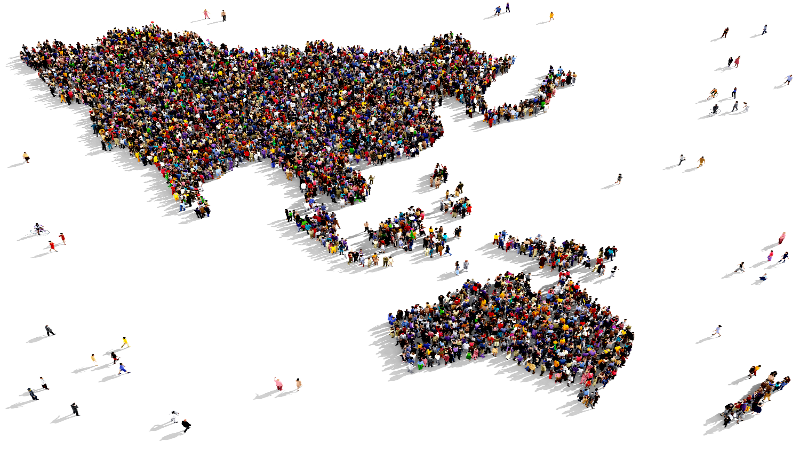Australia-China monthly wrap-up: October 2020
November 04 2020

By Elena Collinson and James Laurenceson
Australia was this month on the receiving end of mixed signals from the People’s Republic of China (PRC). On the one hand, the PRC seemed to indicate that the door remained open for reconciliation on equal terms. On the other hand, reporting indicated it continued to ramp-up economic pressure, with coal and cotton added to the steadily growing list of Australian exports potentially subject to blocks, on top of barley and beef. And worryingly, at the time of writing, there is an as yet unconfirmed report in the South China Morning Post that from November 6 the PRC will bar barley, red wine, timber, coal, lobster, copper ore and copper concentrates from the PRC, with a ‘ban on wheat likely to follow, although a date has not yet been set’. Adding to the confusion, the PRC Commerce Ministry then told The Australian on the same day that they ‘[did not] know of such rumours’. It is also an oddly timed set of actions for the week of the 2020 China International Import Expo in Shanghai, a trade fair geared towards emphasising the PRC’s support for ‘trade liberalisation and economic globalisation’ and to ‘actively open the Chinese market to the world’.
Reports emerged on October 12 that the PRC was seeking to restrict Australian exports of coking coal and thermal coal, issuing verbal notices to state-owned steel mills and power plants to stop using Australian coal. This was followed on October 14 by BHP’s chairperson noting the company had ‘recently received deferment requests from some of our Chinese customers’. Australian coal had also been subject to a go-slow by the PRC in 2019.
On October 16 Cotton Australia leadership attested to the fact that ‘the National Development Reform Commission in China has recently been discouraging their country’s spinning mills from using Australian cotton’.
While Prime Minister Scott Morrison, Trade Minister Simon Birmingham and Treasurer Josh Frydenberg have mostly been circumspect in commenting on these developments – refraining from characterising them as economic coercion and rejecting the notion that Australia is at ‘economic war’ with the PRC – a growing sense of unease is becoming apparent. Trade Minister Simon Birmingham on October 23 said, ‘We continue to have no clear evidence of a formal declaration by China, but clearly the feedback coming from Australian businesses dealing with their Chinese counterparts is deeply concerning.’
The latest on the economic front jars with the conciliatory rhetoric Australia heard earlier this month from Madame Fu Ying, a former PRC vice minister of foreign affairs and ambassador to Australia, and currently vice chair of the National People’s Congress Foreign Affairs Committee. Madame Fu had called on ‘both countries…to show their sincerity and courage to get out of the current dilemma’ in an interview with The Australian Financial Review published on October 5. She said:
We should make more effort to increase contact, communication and co-ordination, and increase mutual understanding and trust in the process of solving problems and narrowing divergences, instead of resorting to confrontation and abusing language based on assumptions and hypothesis, thus hurting each other.
Madame Fu’s comments were notable in that onus for repair of the relationship was placed on both Australia and the PRC, as opposed to solely on Australia – usually the prescription of choice for PRC representatives. Also worth homing in on was the acknowledgement that ‘[t]he trade structure between China and Australia is determined by the complementary needs of the two countries’ and that ‘[t]o cut off the supply chain deliberately will bring about high costs and hurt the interests of all countries’, a rare admission of mutual economic dependence.
While Madame Fu’s comments have been cautiously welcomed, with the Prime Minister on October 7 stating, ‘We're for a positive and good relationship. It's a mutually beneficial relationship. We'll be very clear about what our sovereign interests are and we'll respect China's sovereign interests’, frustration is also increasing on the Australian side vis-à-vis the continued lack of willingness by the PRC to engage in dialogue on a ministerial level. Australian ministers, including the Trade Minister and the Agriculture Minister, continue to be unable to speak with their PRC counterparts. Trade Minister Simon Birmingham said in response to Madame Fu’s comments, ‘Australia stands ready to facilitate ministerial dialogue and continues to extend an open invitation to China to do so.’ He repeated the point more forcefully on October 13: ‘We will sit down and maturely deal with the points of difference as well as hoping to pursue points of agreement. It's up to China as to whether they’re willing reciprocate.’
Leader of the Opposition Anthony Albanese, asked whether he agreed with the assessment that it was incumbent on ‘both sides [to] use different language, not just Beijing’, said: ‘[I]t’s important, I think, the Australian government be more strategic and less political in some of its rhetoric when it comes to China.’ The Opposition Leader has during recent press appearances become slightly more vocal in criticisms of the government’s management of relations with the PRC, asserting, for example, that ‘this government doesn’t seem to have made any effort to have a positive, constructive relationship to our mutual benefit. And that is of real concern.’
Some aspects of the Australian government’s rhetoric on the PRC were also questioned by former Defence Force Chief Angus Houston, who on October 15 said, ‘I think there’s been some, shall I say, loose talk from here in Australia where we’ve seen some comments basically make the circumstances a little worse than they needed to be.’ (During Senate Estimates on October 28 Foreign Minister Payne described backbench discourse on the PRC as ‘both a bonus and a burden’). He emphasised that: ‘China is our partner, China is not our enemy – let’s get that very straight’ and pointed to the reality that ‘[t]hey’re not going to go away, they’re going to get stronger, they are going to be a force that we have to deal with, so we’d better work out the best way to deal with them.’
Foreign ministers from Australia, the US, Japan and India, the countries forming the Quadrilateral Security Dialogue (the Quad), met in Tokyo on October 6 – the second such meeting at a ministerial level. While the in-person meeting was significant in terms of timing – proceeding in the middle of a global pandemic and as the India-PRC border dispute intensifies – it is also worth noting that it did not produce a joint statement. Individual releases issued by each country included no direct reference to the PRC, with US State Secretary Mike Pompeo the only representative to mention the PRC in opening remarks and explicitly link the Quad to countering the PRC. He said that it was ‘more critical now than ever that we collaborate to protect our people and partners from the CCP's exploitation, corruption and coercion’. He added in a subsequent interview, ‘Once we’ve institutionalised what we’re doing – the four of us together – we can begin to build out a true security framework’, terming the Quad a ‘fabric’ that could ‘counter the challenge that the Chinese Communist Party presents to all of us’. However, while Australia, Japan and India might not be as enthusiastically vocal in public about the Quad’s potential to counter the PRC in the region, there seems to be some appetite for movement towards a more formalised framework for the grouping. For example, India on October 19 invited Australia to rejoin the annual Malabar naval exercises with Japan and the US, taking place in November. The Quad, taking shape in this manner, will likely stoke further tensions with the PRC. PRC Foreign Minister Wang Yi on October 13 described the grouping as part of an American effort to create an ‘Indo-Pacific NATO’.
Australian citizen and author Yang Hengjun, detained in the PRC since January 2019, was indicted on charges of espionage on October 7. The Foreign Minister on October 14 issued a statement saying the Australian government had ‘seen no evidence to support this charge,’ noting that Dr Yang’s treatment has fallen ‘short of basic standards of justice and procedural fairness, and is not compatible with international norms or best practice.’ The PRC Embassy in Australia termed the Foreign Minister’s statement as ‘deplorable’, stating, ‘[W]e reject the accusation’. The Shadow Foreign Minister Penny Wong articulated the Australian Labor Party’s support for the government’s stance and advocacy for Dr Yang.
Australia also continues to adopt a vocal stance through diplomatic channels against the repression of Uighurs and other minorities in Xinjiang, joining with 38 other countries at the beginning of this month to call for ‘immediate, meaningful and unfettered access to Xinjiang for independent observers’ at a committee session of the United Nations General Assembly.
The total annual value of Australia’s goods exports to the PRC eased again in August with negative growth recorded in both mining and non-mining categories. Preliminary data from the Australian Bureau of Statistics point to a stabilisation in September at an aggregate level. These same numbers put the share of Australia’s goods exports going to the PRC in the first nine months of 2020 at 40.5 percent. This is 2.3 percentage points higher than in 2019.
After launching an anti-dumping investigation into Australian wine on August 16, the earliest possible date the PRC could have levied preliminary tariffs under World Trade Organization rules was October 18. The date passed without incident.
The defining characteristic of the Australia-PRC trade relationship this year is aggregate resilience owing to iron ore, while other sectors have mostly fallen and there has been a spike in uncertainty around individual goods. A key metric for determining the extent to which specific Australian goods are being singled out for punishment is sudden reductions in their share of PRC imports, with the lower share then sustained over a longer period. Drawing on the benefit of hindsight, several cases of alleged PRC economic coercion between 2017-2019 turned out to be more bark than bite. It remains too early to tell how much more serious the impact of the latest developments around coal and cotton will be.
Key trade indicators table - October 2020
Elena Collinson is a senior researcher at the Australia-China Relations Institute, the University of Technology Sydney.
Professor James Laurenceson is Director of the Australia-China Relations Institute at the University of Technology Sydney.


